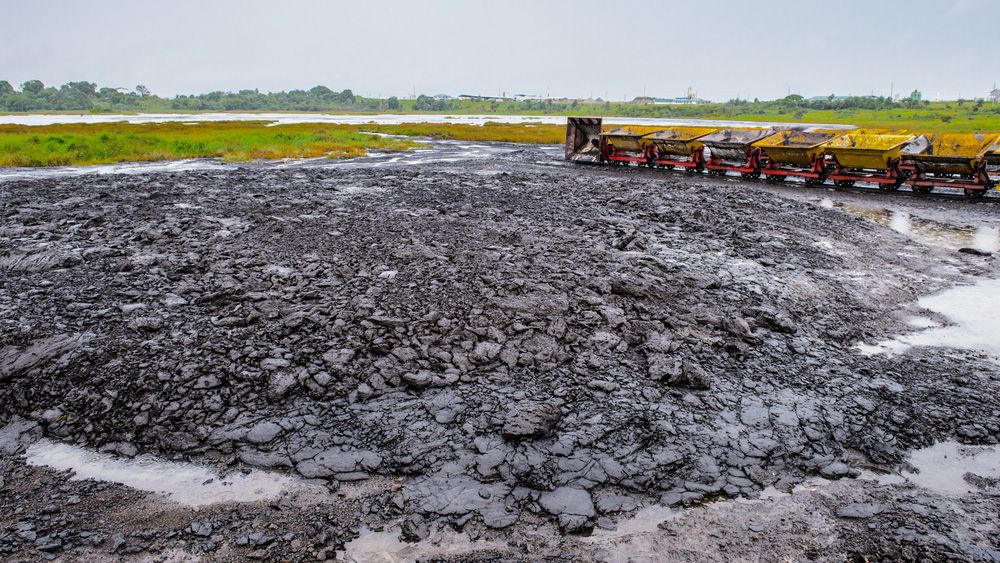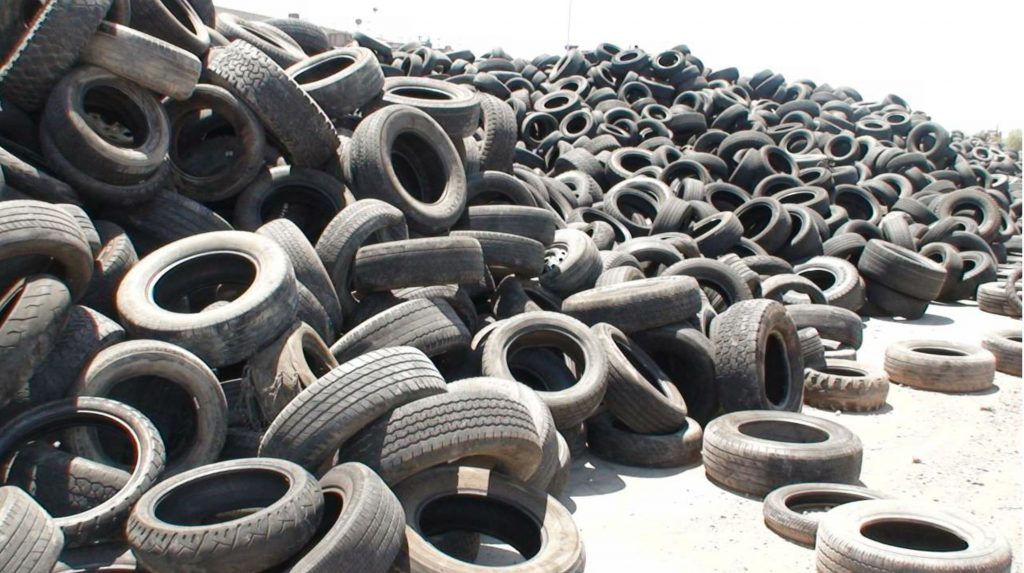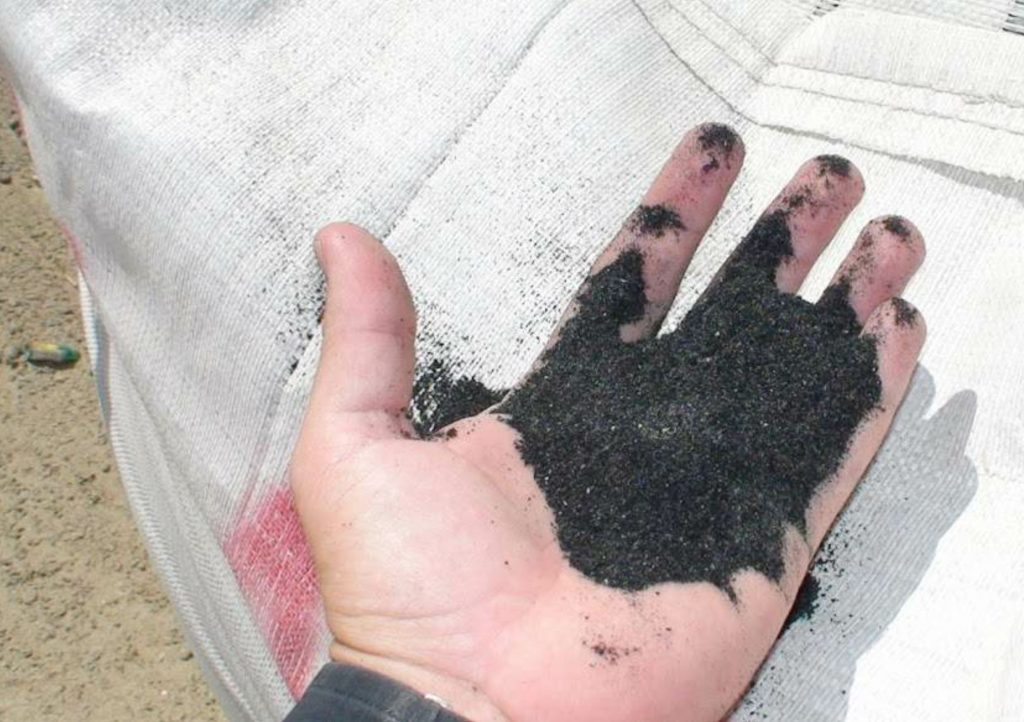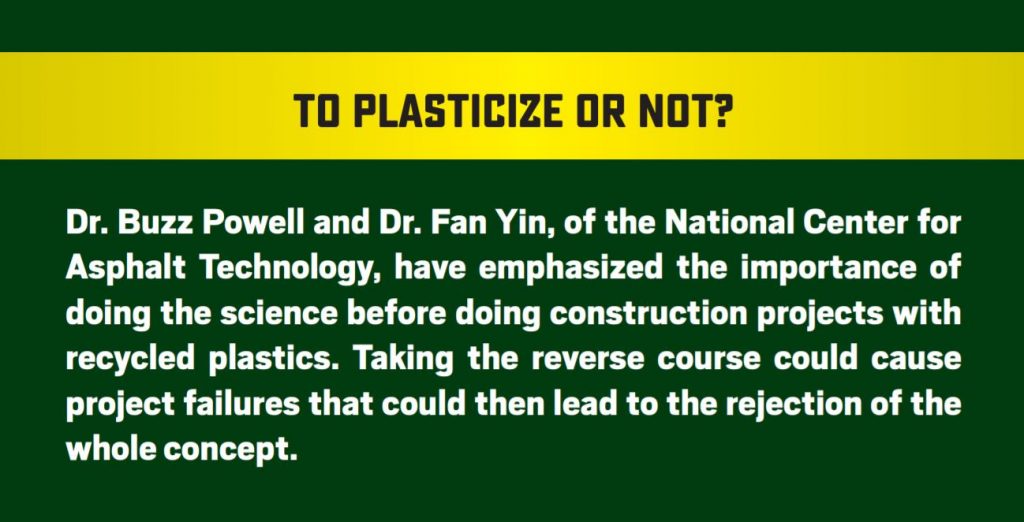Industry Incorporates Sustainability At Asphalt Production Plants – Part III
BY Malcolm Swanson, P.E.

Editor’s Note: During the National Asphalt Pavement Association (NAPA) annual meeting on Marco Island, Florida, February 2019, a committee on which I serve discussed the fact an elected representative had asked our industry how we could improve sustainability. The representative wanted to know how the asphalt industry would work to lower greenhouse gas (GHG) emissions, address climate change and so on. The asphalt industry already works with sustainable practices to lower GHGs and keep an already low carbon footprint in check. Recently, a member of the Astec Inc. family, Malcolm Swanson, P.E., gathered information for an 11-page document outlining some of the industry’s sustainable practices. Part I of the piece appeared in the July edition and Part II in the August edition of AsphaltPro; here we’ll share Part III of Swanson’s paper, in which he gives a deep dive into additional ways to apply sustainable materials use while enhancing your bottom line at the asphalt plant.
While discussions of energy and materials are going to necessarily intertwine, we focused on energy in Part II of this article series and will focus on sustainability of materials now. There are several different categories of materials in use at any asphalt plant. The incoming raw materials consist of virgin materials and recycled materials. There are also finished materials and waste materials. Almost all of these consist of mineral aggregates (rock and sand) and liquid asphalt cement (AC).
Rock, Sand, Recycled Asphalt Pavement (RAP)
The whole Earth is made of rock, yet the availability of rock is a concern. A part of the problem is that the requirements for rock for construction of highways that can stand up to heavy truck traffic are very stringent. Access to high quality rock is complicated by land becoming occupied by residential, commercial and industrial uses. As this happens, potential viable quarry sites become scarcer. That is especially true near urban areas where the need for materials is greatest.
Also, some geographical regions, like much of Florida, have no good local rock. High quality rock has to be brought in by truck, rail, barge, etc. All of these transportation methods use fuel. As much as is practical, mixes should be designed to use indigenous stone and sand. However, those materials sometimes will not work for demanding applications.
In many cases, there is plenty of good local rock already on roadways that are being resurfaced. Whenever possible, in preparation for resurfacing, the old surface materials (RAP) should be recovered by milling it up and returning it to the asphalt plant. Contractors and DOTs should work together to maximize the use of RAP, thus stretching the remaining available virgin rock further.
Asphalt Industry Incorporates Sustainability at Asphalt Production Plants – Part I
Liquid Asphalt
Most liquid asphalt is the residual of petroleum refining processes. Natural deposits, such as the well-known Trinidad Lake asphalt repository, do exist, but they are minor sources by comparison.
If fossil fuel use diminishes, the availability of liquid AC—also called bitumen—would also diminish. Ironically, the opposite situation—increasing demand for fossil fuels—is also a threat to the liquid AC supply. With increasing oil demand or decreasing supply, at some point, operating coker units that extract more fuels from petroleum refinery residuals, leaving no asphalt, would increase in number and capacity. Because RAP includes both aggregate and high quality AC, maximizing its use will help deal with future shortages of virgin AC.

The asphalt industry alone cannot solve the problem of used tires in our landfills, but we have taken on the call to include tire crumb rubber in asphalt mixes with success. Check out the article on Liberty Tire’s SmartMIX at www.TheAsphaltPro.com. Both photos courtesy Liberty Tire Recycling, Pittsburgh, Pennsylvania
Asphalt Roofing Shingles
The asphalt shingles enthusiasm seems to have diminished. Some contractors found them difficult to use. When processing shingles for use, dealing with size reduction and the resulting high moisture content, various problems are encountered. Nevertheless, shingles consist of some good materials, especially liquid asphalt. The asphalt content is about 18 percent in the southern tier of the United States and up to about 22 percent in the northern tier of the United States and Canada. Prepared, processed and incorporated into the mix correctly, shingles contribute to excellent mix and effectively replace some liquid asphalt. In as much as using shingles solves the used shingles disposal problem as well as providing a useful asphalt pavement material, it seems to me we should continue to use them and just keep improving our technology, based on science.
Rubber Tires
The accumulation of rubber tires continues to be a problem; however, the asphalt industry alone cannot solve it. We can and do take some of the tires and can make excellent special-purpose mixes with them by incorporating fine rubber powder. Special-purpose pavements can bring in a good return, thus we can contribute to the solution.
Plastics
Plastic packaging material rubbish has become a huge environmental problem and may be an opportunity for the asphalt industry. Polymers, as everyone in the industry knows, can be beneficial to asphalt pavements. Plastics are polymers, but not all polymers are created equal.
The idea behind waste plastic as an opportunity is that we can somehow break down and put recyclable plastics to beneficial use in pavements. The National Center for Asphalt Technology (NCAT), the National Asphalt Pavement Association (NAPA), Dow Chemical, and other researchers as far away as India and Australia are working on whether—and how—recycling of plastics into pavements can be done in a way that benefits pavements. The development of the science is still at an early stage according to Dr. Buzz Powell and Dr. Fan Yin, both of NCAT. They emphasized the importance of doing the science before the construction projects. Taking the reverse course could cause project failures that could then lead to the rejection of the whole concept.
There are several types of plastics to be considered, but only two ways of incorporating the plastics into the asphalt. The two methods are “wet” and “dry.”
The wet method involves blending the plastic into the liquid binder before incorporating the binder into the asphalt mixture. With the dry method, the plastics are introduced as a dry additive directly into the hot aggregate. At this time, plastic bags, which are made of high-density polyethylene (PE-HD), are a primary focus of research for recycling into asphalt. The relatively low melting point of PE-HD is compatible with normal liquid asphalt process temperatures.
Introduction by wet method appears to be most likely to succeed; however, just because two materials exist in liquid state within a certain temperature range does not mean that they will automatically blend well. We are all familiar with oil and water. Some chemical additives may be necessary to facilitate blending.
The waste materials upon which most research effort is being applied, and those considered most likely to be recyclable to the benefit of asphalt pavements, are these:
- High-density polyethylene (PE-HD), commonly used to make grocery bags
- Low-density polyethylene (PE-LD), used to make frozen food bags
- Polypropylene (PP), used to make microwaveable food containers

Photo courtesy Liberty Tire Recycling, Pittsburgh, Pennsylvania
Calcium Hydroxide (CaOH)
Hydrated lime is frequently used for moisture sensitivity (stripping) control. It is made from calcium carbonate (limestone). The process of producing hydrated lime involves the release of carbon dioxide (CO2). That’s the down side, but there is a substantial environmental upside. Lime is not only an effective anti-stripping additive; it is effective at capturing certain pollutants in plant exhaust gases.
First, when applied by any means that wets it, including applying it directly to the incoming wet aggregate, it dissociates in the water to CA+ and OH- ions.
Then, when exposed to CO2 in the exhaust gas stream, some of the Ca combines with the CO2 to form calcium carbonate (CaCO2), limestone, from whence it came. Lime, introduced into the dryer where it has direct contact with exhaust gases, captures and neutralizes acid-forming compounds. The acids can come from sources such as sulfur in recycled fuel oils (most recycled fuel oils do not contain significant amounts of sulfur) and in ground water (in some areas) and salt in brackish water and in some aggregates. The chlorine in the salt (NaCl), when exposed to the burner flame and the hot, moist environment of the dryer, forms hydrochloric acid (HCl). Sulfur, from any source, will form sulfurous (H2SO3) or sulfuric (H2SO4) acids. The unintended benefits of lime in these situations include significant reduction of corrosion potential (drum, flights, ductwork, baghouse steel structure and cages, bags, and stack) as well as improved emissions quality.
Industry Incorporates Sustainability at Asphalt Production Plants – Part II
Planning Ahead Makes Business Sense
As we design plant equipment, we should ensure our design process comes from a human-needs perspective. … This also means that we have to think long term as we design. We have to think all the way to the end-of-life of the equipment. What happens when the equipment is eventually deactivated? At that point, what can be recycled and what can’t? Are recyclable materials easily separated into different material streams or are they so bound together as to hinder the recycling of otherwise recyclable materials? The way we combine different materials in plant components should facilitate the eventual easy separation of different materials into appropriate recycle streams. This will minimize the cost of disassembly and maximize the value of the recycled materials.
By the same token, we need to incorporate recycled materials into our designs as much as is practical. Of course, steel and iron castings consist mostly of recycled metals anyway, as does aluminum. Where plastics are used for instance, we should consider things such as the fact that ABS plastic is not biodegradable and is made from fossil fuel sources. PLA plastics are made from biomass sources and are biodegradable. However, ABS has strength and temperature resistance that are superior to those of PLA plastics. These design decisions are not always simple.

It should be of considerable interest at this point that almost every action proposed in these three parts of this series to help us become a more sustainable industry also tends to make us more profitable. Pursuing sustainable operations is not something we should resist. To the contrary, it makes sense to embrace it. That does not mean we should jump on every idea that comes along in the name of sustainability, but there is no shortage of known and proven opportunities to become more sustainable that make good sense.
In a recent Sunday sermon delivered by my pastor, I learned that there is a psychological phenomenon called “inattentional blindness.” That I didn’t know the name before is probably due to “inattentional deafness.” Most of us have seen an example of inattentional blindness in the “Invisible Gorilla” video illustration of how we miss things that are right in front of us. We often do not see opportunities that are right in front of us. Whatever you call it, it is a thing common to man.
If you have been missing some of these very profitable and sustainable opportunities, don’t feel bad. You are not alone. Something else I heard in church recently was that we have the “want to,” but we tend to come up short on the “do it.” If you have been missing out on some great opportunities, maybe you didn’t see it or maybe you did and want to do it, but just haven’t started yet. If saving the planet seems too big to take on, just keep in mind, the dirty little secret about sustainability is that it’s profitable.
Malcolm Swanson is the vice president, innovative products, for Astec Inc., Chattanooga. For more information, contact Swanson or other members of the Astec team at (423) 867-4210.
